#herbology
Text
Tumblr Grimoire
Here is a comprehensive collection of all of the posts I've done on the occult and the spells I've done and spell resources. This will be added to over the life of the blog as well this way everyone won't have to dig for everything. And you get to learn a bit more about my practice.
Occult & Folklore Lessons
History Of Solomonic Practices
Ars Goetia 72 demons Kings
Ars Goetia 72 Demons Dukes Pt. 1
Petitioning Deities From Around The Globe
Ancient Art of Osteomancy
Curses: A History On The Dark Arts and How to Practice Them
The Enochian Language
Scrying, A History, and Guide
CELTIC FOLKLORE&MYTHOLOGY 101
Realm of Celtic Faeries
Protection From Malignant Spirits
Appalachian Folk Practices 101
Incantation Bowls
Spells and Rituals
Exorcism
Exorcism Charms
Exorcism Powder
Boundary Powder
Everlight Candles
Solarian Oil
Vincula Luna
Igni Bowls
Basic Banishment
Binding A Spirit To An Object
Malignant Spirit Binding Totem
Pseudo Moon Water
Medicinal Herbs & Remedies
Tincture For Sleep
Salve For Minor Injuries
Grimoire Reading List
this is added to periodically it's free pdfs you can download
Informational Joke Posts/Answered Asks
Greek Sacrifice Traditions
Is Mana Real?
Sonneillon The Demon Of Hate
Demonolatry for Lesser Known Demons
Do you have to be born with magic, or can anyone learn it?
Navigating the Divide Between Legitimate Academic Study and Occult Fiction
Can magic heal physical injuries or illnesses, or is that just stuff they show in movies?
Services Offered By WanderingSorcerer
Get Early Access To All Of My Work On Magick and The Occult
Spellwork and Tarot Reading Prices Listed Here
One On One Occult Lessons With WanderingSorcerer
☕If You Love My Blog Consider Buying Me A Ko-Fi☕ 😊

#occult#occultism#occultist#demons#ars goetia#solomonic magick#magick#witchcraft#folklore#folklorist#magi#magus#grimoire#grimoires#witch#witchblr#witches#witchythings#witchlife#pagan witch#WanderingSorcerer#herbalist#plants and herbs#herbology#herbalism
2K notes
·
View notes
Text


February's plant for my herbologist tier is the Himalayan blue poppy! This rare alpine plant grows in high altitudes, in misty mountain meadows. It's beauty and scarcity make it an ephemeral sight.
If you'd like these rewards, the mini poppy postcards and double sided info and folklore card with facts about this plant, please consider signing up to my herbologist tier!
I've been obsessed with this gorgeous bloom for years, so getting to draw it, and learn all about and its fascinating plant cousins had me riveted!!
#botanical illustration#illustration#witch aesthetic#dark acamedia#herbology#plants#plantblr#plant art#dark acadamia aesthetic#i love m. horridula#just look at that spikey little child 🥺
501 notes
·
View notes
Text

#cozycore#cottage life#cottagecharm#cottagestyle#grandma aesthetic#plants#warmcore#countrycore#cottage garden#gardencore#herbalmedicine#herbology#herbalism#herbal magick#plants and herbs#plant core#plant aesthetic#plantblr#mushroom aesthetic#mushroomcore#mushrooms#spell jars#spell jar#kitchen witch#witches#witchcraft#cottage witch#earth witch#kitchen witchcraft#green witchcraft
740 notes
·
View notes
Text



🪴🌵🌿
I wish there were more classroom shenanigans. I love them so much 😭
#hogwarts legacy#hogwarts legacy fanart#hogwarts legacy mc#sebastian sallow#everett clopton#leander prewett#mirabel garlick#herbology#mimbulus mimbletonia#lyla estaris
465 notes
·
View notes
Text
Day 29: Pollen (Part 1)

“Wait what’s this, now? I feel… odd.”
Stay tuned for Part 2…
#boshhptober2023#art#drawing#sketch#artists on tumblr#doodle#harry potter#drarry#draco malfoy#8th year#hogwarts#herbology#what is with me and magical plants and these two#hp art#drarry art#comic art#boshdraws
497 notes
·
View notes
Text
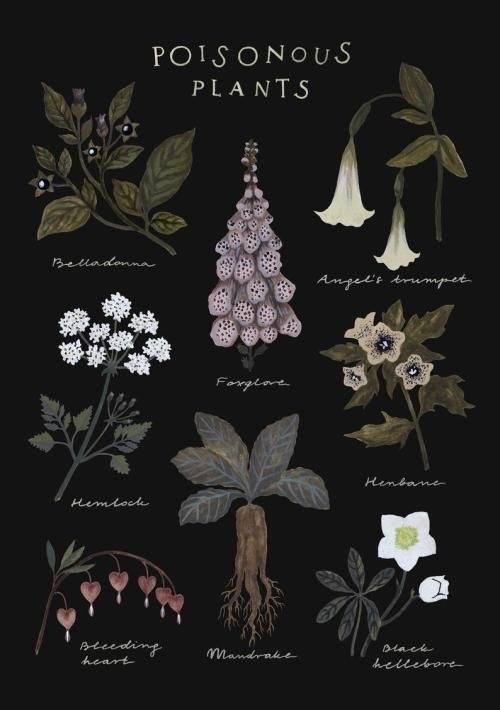
567 notes
·
View notes
Text
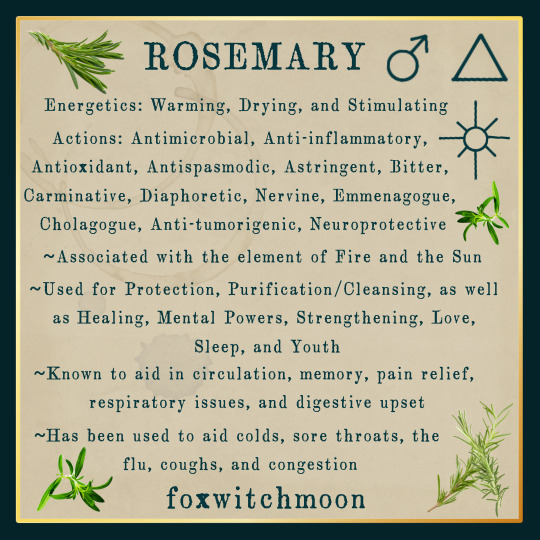

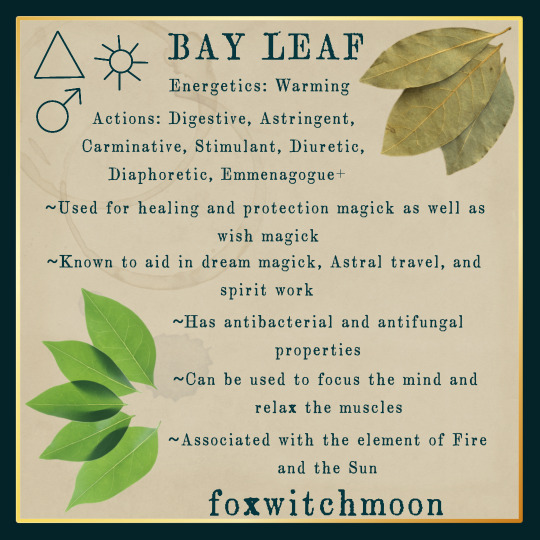
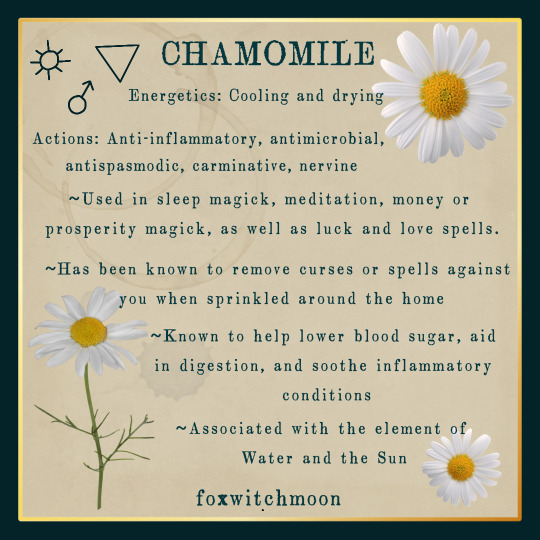
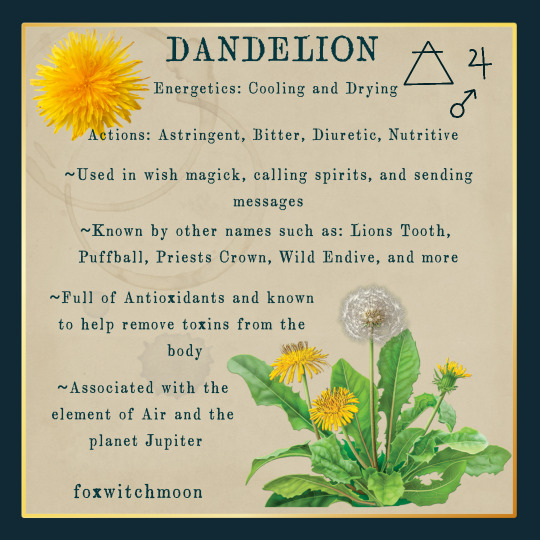
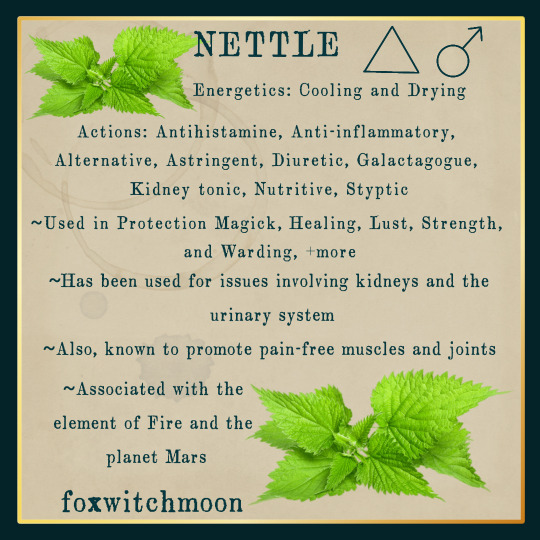
Herbology × Magick🍃
Follow @foxwitchmoon on IG for more🌿🔮🌙🧿🕯🪻🗝✨️
#witchblr#grimoire#witch#witchcraft#witches#occult#plants and herbs#foraging#chakras#herbology#herbalwitch#herbal medicine#herbalism#green witch#eclectic witch#lunar witch#moon magic#rosemary#nettle#dandelion#mugwort#bay leaf#chamomile
557 notes
·
View notes
Text
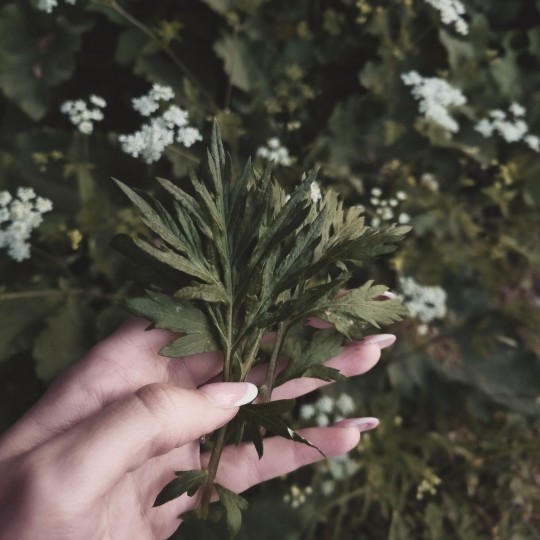

Picking mugwort in the forest at sunrise, gonna have some really sweet dreams tonight 🌿
#nature#flowers#herbs#tea#cottagecore#fairycore#forest witch#witch aesthetic#green witch#green aesthetic#naturecore#my photography#mugwort#witchcraft#potions#herbology#forests
1K notes
·
View notes
Text
my most viewed tiktok so far! 🥲
one of the first ones i made💖
#ominis gaunt#ominis gaunt fanart#sebastian sallow#sebastian sallow fanart#sebastian x mc#sebastian x reader#slytherin#hogwarts legacy#hogwarts legacy fanart#sebastian sallow ai#ominis gaunt ai#garreth weasley#garreth weasley fanart#comedy#fun#herbology#sebastian hogwarts legacy#hogwarts legacy sebastian#hogwarts#hogwarts school of witchcraft and wizardry#hogwarts legacy ominis#hogwarts houses#harry potter#hogwarts oc#funny jokes#nerd jokes#terrible puns#puns#alliezarin
680 notes
·
View notes
Text
𓍊𓋼𓍊𓋼 Wild Plant Lore 𓍊𓋼𓍊𓋼
Some notes from my BOS of weeds / local plants that can be used in one's craft. Includes magickal correspondences, traditional uses (medicinal and culinary), and some of their folklore.
Disclaimer at the end !!
𓍊𓋼𓍊𓋼𓍊𓋼𓍊𓋼𓍊𓋼𓍊𓋼𓍊𓋼𓍊𓋼𓍊𓋼𓍊𓋼𓍊𓋼𓍊𓋼𓍊𓋼𓍊𓋼𓍊𓋼𓍊
Acorns- the nuts of oak trees. They're made of one seed covered by a tough shell with a cap on top. These nuts can be eaten and are turned into flour to make breads and pastas. Much about acorns are unknown as they are mainly unused in everyday life, but we do know that they contain a high fiber content which has been used to treat bloating, diarrhea, stomach pains, and other digestive issues. Because these nuts come from oak trees they’ve been a symbol of great wisdom and longevity in many cultures such as Celtic and Nordic. Many people have worn necklaces with acorn charms on them to bring protection
• Protection, prosperity, growth, wisdom
Bull nettle- Thick stock and toothed leaves with stiff prickly stinging hairs, the flowers are small, white, and covered in hispid. The seed pods are lightly coloured and cylindrical, containing ~3 seeds. Touching this plant will cause a stinging, burning, or itching sensation that will last for hours. The seeds from the seed pods are edible and taste nutty but need to be harvested with extreme care as to not sting yourself. The seeds can be roasted or ground into a "cornmeal." The root of bull nettle is edible, it's similar to a potato but tougher and the core is so tough it should be discarded.
Binding, banishing, warding, baneful (to cause pain)
Cattails- Cattails are semi-aquatic plants that consist of multiple long spiked leaves with one center spike holding a sausage-shaped head that is filled with cottony seeds. Their rhizomes can be turned into a flour with a high protein content and the shoots can be cooked and eaten. The stems and leaves can be turned into paper. A poultice from the roots can be used as an antiseptic, for burns/cuts, and to reduce inflammation. When harvesting this plant please do not overharvest, it’s a very important part of a wetland’s ecosystem ! Also, always make sure the water near the cattails is clean because cattails filter pollutants out of the water so if you plan on consuming the plant, you could also be consuming those pollutants.
Fertility, growth, prosperity, peace, water-associated magick, cleansing
Catchweed- Also known as cleavers, hitchhikers, goosegrass, or sticky weed. Catchweeds are branchy, square stems that latch onto other plants and buildings with small hooked hairs on their leaves and stems. They have tiny, star-shaped, green or white-ish flowers with four petals. They also have small burrs that contain a few seeds that are covered in hooked hairs so they can latch on to animals to disperse seeds. For those who want to risk getting pricked, catchweed is edible. Young leaves and stems can be cooked and eaten like spinach. This plant is also in the same family as coffee, meaning that you can dry and roast the seeds in their burrs to make a lower-caffeine coffee substitute and teas. Poultices have been made with the whole plant, as with tea washes from dried leaves, in many cultures for light burns, small wounds, and eczema. It has a cooling effect so it’s also used in infusions for bug bites, stings, and poison ivy.
Energy, binding, commitment, protection during travel
Chickweed- Also called chickenwort/weed, winterweed, and simply ground cover as that’s its primary use in modern society. Long stems with pointed, oval-shaped leaves and tiny white star-shaped flowers that resemble carnations. Its star-shaped flowers earned it the botanical name “Stellaria media”. Its flowers and leaves are both edible and are very popular in salads, soups, and stir-fries. It has a taste similar to sprouts that you’d use in a salad. Chickweed salves are used for skincare, poultices for poison ivy, and teas for digestion. Historically, it's been used for skin ailments like itching, dry skin, and even bruises or bug bites from a tisane/tea of the stems applied to the affected area. In European folklore, it was said to help promote a happy, balanced family and love life. This is believed to come from how chickweed grows so closely with all its stems intertwined but in a way that promotes each part to grow healthy, so it promotes everyone in a household getting along with one another while having their own sense of individuality. It’s also associated with perseverance (like most weeds I’ll admit), this is because chickweed is seen growing everywhere, in yards, in forests, on piles of dirt. If it sees an opportunity, it’ll take it and thrive year-round.
Love, stability, loyalty, communication, lunar-associated magick
Clovers- white, balled flowers with three to four small, round leaves. Every part of this plant is edible, the leaves and flowers are sweet and vanilla-y so they are good in teas and sweets. Clover has been used to ward off fevers and used in tisanes/teas for inflammation. Clover has been associated with good fortune for centuries, especially four-leaved clovers. A shamrock is a symbol of a three-leafed clover representative of the Christian Holy Trinity, it’s also believed that the Celtic druids thought shamrocks to be significant because they had three leaves possibly representing the underground, earth, and sky.
Luck, prosperity, happiness, faith
Creeping Speedwell- Teeny tiny violet/baby blue flowers with light yellow middles, it is incredibly fast-growing and can be found in most yards. Speedwell is edible and good in salads, pestos, and smoothies. Tea is made from the leaves and flowers to help clear congestion, allergies, and coughs. Some add it to their baths to help with their allergies and inflammation, inflammation is also helped by a poultice. In some folklore, it’s said that a tea or ointment from speedwell could help one with psychic visions and faerie sight. Before I truly knew the folklore behind speedwell I had this sense that it would help with your clairsenses.
Abundance, divination, psychic/clairsense work
Creeping buttercup- Buttercups are toxic and will leave blisters when raw so they must be cooked or dried before being consumed, even then it's not recommended to eat. A poultice of the (boiled) leaves is used for inflammation and wounds and a tea from the plant is used for its analgesic properties, but be wary of the blisters that may occur. Buttercups used to be used to ward off faeries, many farmers would plant these around their cows to prevent them from being stolen from the fae. There are a lot of stories relating buttercups to cows which is very very cute but ironic because buttercups are actually toxic to many animals! For its many associations with children, fairies, and coyotes across various cultures it can also be related to mischief
Youth, happiness, love, protection from fae, mischief (jinxes/hexes/glamours)
Creeping charlie- Also known as ground ivy. Creeping charlie has square stems with dark, rounded or fan-shaped, toothed leaves. It has small blue or lavender, funnel-shaped flowers that grow in clusters of two or three in the spring. Creeping charlie is edible and has a long history of being used in beer and cheese, it tastes subtly minty as it's in the mint family. Young leaves are good in salads to freshen them up and it's also really good in teas and sweets. There is a risk of it being toxic if consumed in large quantities though. For centuries now it's been used in teas to calm a cough, been said to help with headaches, and has been used on the skin to reduce pain and soothe inflammation. Some have turned it into a snuff and used it for congestion, kind of like Vaporub. It was actually brought over from Britain to the Americas for its medicinal uses, now it’s one of those weeds people will spend tons of money trying to get rid of. Alike creeping buttercup, it’s said that some may have used this to ward magick from their livestock and themselves. Some say it’s good to use to find out who has cursed you or sent the evil eye your way and in some stories, people would drink it as a tea to get rid of their shyness.
Protection from magick and spirits, divination, clarity, courage
Deadnettle- My favourite weed :) Square stem, fuzzy leaves that occasionally are red/purple at the top, with tiny tube-shaped light pink flowers. Despite technically being a nettle, it’s not a true nettle so very few people will have a reaction when touching this plant. Deadnettle is part of the mint family and every part of it is edible, despite that though it's not very minty and is floral and sweet. My favourite parts are the tiny pink flowers which have sweet nectar in them and are good in teas, syrups, sweets, and jams. The leaves are good in teas, smoothies, pestos, and salads. A poultice or salve can be made from the leaves for wounds and teas can help with allergies. This plant is sometimes called purple archangel because it pops up around the Feast of the Apparition when it was said St. Micheal appeared. It’s associated with determination because this lil dude will grow anywhere, even in spots with the worst quality soil.
happiness, determination, peace, healing
Dandelion- Dandelions are bright layered yellow flowers with toothed leaves that grow pretty much anywhere there is enough dirt to get their roots in. The entire plant is edible, the flowers are slightly sweet making them good for salads, syrups, and sweet. The leaves are slightly bitter but that can be lessened when harvested young or boiled, they're good as spinach replacements and can be dried for teas. The flowers can also be turned into dyes. The plant's name can be literally translated to 'healing herb' as it has been used in many cultures for it's gut health and detoxifying properties. Teas and tinctures from leaves are made for a diuretic and flowers are made into salves or beauty products to treat acne/eczema and to reduce inflammation. About dandelions being diuretics - the name dandelion comes from the french name dentdelion (tooth of the lion) but there’s actually a second French name, “pissenlit”, which means piss the bed !!
luck/wishes, communication, balance, courage, youth
Daisy- Daisies are low-growing flowers with thin, long, white petals and yellow disc florets (middles). Common daisies are edible, these are really found growing anywhere even in your lawn. Leaves can be used in salads or stir-fries and flower heads can be pickled or used in salads. Wines, soups, and teas are also commonly made from daisies. The flowers have a slightly bitter taste but look pretty in dishes. Daisies have been used in teas for coughs, bronchitis, and common colds. It's also been used to "stimulate the digestive system" to promote appetite. Daisies have been into lotions and other skincare products to treat rashes, eczema, and other skin issues. Daisies came to be associated with love and motherhood through it being the flower of Freya, innocence/purity through the story of Vertumnus and Belides where the flower gets its scientific name, and purity the popular phrases like “fresh/clean as daisies”.
Happiness, cleansing, love, purity (cleansing), motherhood/childbirth
Feverfew- Feverfew are daisy-like flowers with bright yellow middles and white petals, with yellow-green leaves in a feathered arrangement, that grow in small bushes together. Feverfew is edible but many will steer clear of it as it has a very bitter taste. It’s often made into teas and used in pastries. Although feverfew isn’t used to reduce fevers anymore, there are still many health benefits and medicinal uses of the plant, some people even calling it ‘medieval aspirin’. People will take feverfew pills or apply a poultice to relieve pain from arthritis and inflammation. A poultice can also be applied to minor cuts, scrapes, and bug bites. Teas can be made for headaches and some use it to help with menstrual pain. Feverfew is also known to show some skin benefits by reducing redness and inflammation. Feverfew may increase bleeding as it acts similar to an anticoagulant, because of this it is advised that if you are taking a blood thinner like aspirin, Dabigatran (Pradaxa), Heparin (Innohep), or others, you talk to your doctor before taking feverfew. This plant has more medicinal uses than references in mythology but I did find a few references to it being believed to be able to save the life of someone that had fallen from the Parthenon, a temple to Athena, which gave it the scientific name parthenium.
Healing, curse-breaking, love
Lesser celandine- Also known as pilewort or sometimes fig buttercup. Pilewort is a plant on the buttercup family that has dark, heart-shaped leaves and bright yellow flowers with glossy petals. Despite its pretty exterior, touching the plant could cause rashes or blistering especially when the plant is crushed. Ingesting the plant can cause dizziness, vomiting, and worse. While there may be ways to cook out the toxins, I cannot advise anyone to consume this plant without proper experience. This plant is also known as the spring messenger as it's one of the first plants to bloom in the spring. Lesser celandine was referenced a lot in literature, most being about love and foreshadowing happiness alike how it signals spring.
Joy, love, Spring associated magick
Maple seed pods- Maple seeds, also known as helicopters or samaras, are the seed of maple trees, as one would assume. These are winged pods consisting of a papery tissue surrounding a single seed that is usually joined together in pairs of two. The seeds are edible once the outer covering has been removed and taste better while young, becoming bitter as they mature. Some say that smaller pods taste sweeter and larger ones taste more bitter. They're good in roasts, stir-fries, and salads. They can also be dried and pounded into flour ! Much of what we know about maple seeds are simply culinary and there's not much information on their medicinal uses. The majority of the correspondences of maple seed pods come from maple trees which represent balance and longevity. They also are associated with childhood after the many many years of children playing with these helicopter-like seeds.
Longevity, growth, balance, youth
Mulberries- Mulberries come in three different colours which are red, white, and black. Different mulberries grow on different mulberry trees. Black mulberry trees have an orange-y-toned bark with toothed, heart-shaped leaves. White/red mulberry trees have a greyish bark with large, deeply lobed, oval-shaped leaves. Mulberries look very similar to blackberries but longer with each cluster of fruit containing a seed. Mulberries are edible, black ones taste the best and can be both sour and sweet and the white/red ones are duller in flavour but sweet. These are made into jams, syrups, wines, sweets, sorbets, really anything sweet and it tastes great ! These berries are more known for their culinary uses but some studies suggest that they can help reduce cholesterol and improve digestion. In Greek/Babylonian mythology, red mulberries came from white mulberries that were stained red from the deaths of the star-crossed lovers Pyramus and Thisbe which gave them the association of love and death.
Love, death, faith, wisdom
Osage oranges- Also known as horse apples or hedge apples. Osage oranges are a yellow-green fruit with a very rough and bumpy peel. These oranges grow on trees called Maclura pomifera. The wood of these trees are used for very good firewood and yellow-green dyes. The Osage natives would use the wood from the tree for many things like bows and boats as it’s very flexible. The roots of the trees are sometimes made into water infusions to help with eye conditions. People have also used the wood, or even sat out the fruit, to deter insects. Osage oranges are edible but most people, and even animals, will avoid eating them due to their dry and bitter taste. They taste like very bitter and citrus-y cucumbers. These oranges can cause skin irritation to some.
Warding, protection, strength
Pinecones- Pinecones are geometric cones that come from conifer pine trees that produce pollen or seeds depending on their sex. Pinecones symbolize fertility and life in many cultures and have been used in artwork for centuries. The pineal gland in the brain was named after pinecones because of its shape, this gland is sometimes referred to as the “third eye” and some believe that it acts as a witch’s eye would; this is how pinecones were tied to the idea of enlightenment and rebirth as well as the fact that they have been around for so long. Some conifer cones are edible (some aren't!) but they are very tough to chew so you must boil them before eating, pinecone jam has been commonly made from young cones. Pine has been used in teas, tinctures, resins, and many other things to treat coughs, allergies, and help with sinus infections.
Fertility, creativity, prosperity, enlightenment, rebirth
Prickly lettuce- a quite tall, red stem that contains latex with large tooth-shaped leaves that have prominent veins and spikes lining its edges and main vein on its underside. When it blooms it has small, pale yellow flowers. This plant is edible and is pretty much used like normal lettuce while having a slightly bitter taste, as usual, this gets less noticeable as it matures. Leaves can be eaten in salads or cooked/steamed and the root can be made into a tea. The latex substance that comes out of the leaves and stem when injured is called lactucarium which is known as lettuce opium due to its sedative and pain-relieving properties; the process of harvesting this substance is tedious. This can be used to help people sleep, relax, and relieve pain. Lettuce in general has a great amount of significant historical usage. Lettuce came to be associated with sex because an Egyptian fertility god, Min, was associated with lettuce as it was known as an aphrodisiac that was ritualistically ingested before sex. These effects were due to the lactucarium. In Hellenism, when Adonis died he was laid on a bed of lettuce along with other fast-growing plants. In festivals for him, they would burn withered lettuce and mourn his death, this related lettuce to death.
Necromancy, offerings for the deceased, fertility, sex
Queen Anne's Lace- Also known as wild carrot. A tall flowering weed with a thin, stiff stem and tiny white, clustered flowers. The flowerhead consists of a bunch of separate flowers, some plants may have a singular purple/pink flower. Queen Anne's lace's root is edible which is actually where it gets the names wild carrot and Daucus Carota, it's good steamed and boiled. It is pretty stringy and if you wait too long to harvest it can become very hard and woody. This plant is NOT safe to consume for those who are pregnant ! The stem is known to cause skin irritation and rashes to people with sensitive skin. Despite being edible, most wouldn't suggest eating it because it looks almost identical to poison hemlock which if consumed could be fatal. It also looks a ton like wild celery but that's less of an issue. Historically, the seeds of wild carrot were used as an abortant in a "morning after pill" type of way. Wild carrot was named Queen Anne's Lace after Queen Anne of England who was a great lace maker, there is a legend that when making lace one day she pricked her finger then a single drop of blood fell on it and that's why the flower has a single purple flower. Because of the association to Queen Anne, some would use it to try to attract love or make themselves look more beautiful. Wild carrot is also called bird's nest or the bishop's flower which ties it to themes of safety and sanctuary.
Beauty, love, glamours
Rosebay willowherb- Also commonly known as fireweed for its appearance or bombweed because it began to heavily grow in bomb craters/sites in WWII around the UK. The rosebay willowherb has tall reddish stems and willow-like leaves with long magenta flowers. Traditionally it's been used in teas, jellies, and salads. It has a pretty bitter taste so you need to harvest it young and cook it before eating. It's used in teas for its demulcent properties, to treat certain stomach conditions, and has been used in skincare because of its astringent properties. There’s not much folklore about this plant but it’s well known for appearing after events that devastated an area, it was one of the first plants to start growing after Mt. St. Helens, after colonizers burnt down forests, and after bombs dropped in WWII. I’ve also heard it’s bad luck to pick its flowers, either stating that a storm will occur or your mother will fall ill.
Courage, perseverance, change, bad luck
Stinging nettle- tall, heart-shaped, toothed leaves. The leaves are covered in small stinging hairs that when touched will inject chemicals into one's skin and cause slight stinging sensations. Young stinging nettle has widely been used in dishes as soaking/cooking it takes away the sting. It is very similar to spinach in taste, texture, and nutrients. Ointments are made to treat arthritis and inflammation, teas are made from dried leaves and flowers to treat allergies and hayfever. Poultices of the leaves were used for stiff joints and muscle pain by helping blood circulation in that area. Be wary of using stinging nettle on your skin as it can cause rashes and blisters. Some Native American groups used it in teas as a stomach tonic. In Celtic folklore, it was said to keep evil spirits and illness at bay, it also says that when you see thick strands of nettle it means that faeries are nearby.
Binding, protection from baneful magick and evil spirits, strength, curse breaking
Sweetgum seed pods- Also known as witch’s burrs or witch balls. Sweetgum seed pods are hard, spikey seed pods with small holes where the seeds once were. These fall from sweetgum trees after they mature and disperse their seeds. These aren’t edible nor really used for any medicinal purpose. They’re often placed around plants to protect them from animals. Magickally, you can place them around your space to ward off unwanted energies and entities or even grind them into a powder for banishing or protection. These things hurt like hell to step on so they’re also good to use in baneful protection magick, like baneful wards or return to senders.
Protection, warding, binding, baneful protection
Violet- There are many species of violets so I'm going to cover them in a broad sense. Violets are usually small, light purple flowers with short stems, little shrubbery, and heart/kidney/scalloped leaves. In many species of violet both the leaves and flowers are edible and contain high levels of vitamins A and C, but make sure to properly identify your plant before consuming. These can be made into teas, sweets, salads, etc. Violet syrup is my favourite ! Some leaves in wild violets will taste quite soapy, so try them out before cooking them into anything. Violet leaves have cooling and anti-inflammatory properties so they are used in poultices, salves, compresses, and oils for scrapes, burns, and bug bites. Violets have traditionally been used in teas or tonics for coughs and swollen lymph nodes. There is a lot of folklore and mythology that this flower is a part of. Violets are largely associated with modesty and innocence and this stems from two main stories; Persephone was said to be picking violets when Hades kidnapped her to live in the underworld and in Greek mythology when Apollo pursued a nymph, Artemis/Diana turned her into a violet to protect her. There are also stories in The Bible that associate violets with modesty like when Archangel Gabriel tells Mary she is pregnant, violets bloom around her. This is why sometimes when a child dies, violets are put on their grave as a representation of their innocence. There are many other popular stories of violets turning to tears when someone is crying. They’re also associated with love from a story of Venus and Cupid and were believed to be an aphrodisiac in the Middle Ages.
Femininity, respect, wisdom, modesty, divination, love
𓍊𓋼𓍊𓋼𓍊𓋼𓍊𓋼𓍊𓋼𓍊𓋼𓍊𓋼𓍊𓋼𓍊𓋼𓍊𓋼𓍊𓋼𓍊𓋼𓍊𓋼𓍊𓋼𓍊𓋼𓍊
Disclaimer !!: Before you consume or use a plant medicinally, make sure you are 100% sure on the ID. Speak with a doctor before using a plant, especially if you’re pregnant, and make sure you aren’t allergic and that it won’t interact with any of your medications. Do not substitute legitimate medications with herbal remedies, this is not medical advice. Always do your own research before consuming or using a plant medicinally. Some of the plants, while generally safe for humans, are not safe for animals and children. As a general rule of thumb, younger greens will taste better. As the plant matures and bears fruit it will typically become more bitter, so the best time to harvest most of these is before it bears fruit. Make sure to avoid areas treated with pesticides and always wash your takings before use. And make sure you're never over-harvesting, always make sure there's another 'patch' of the plant your taking !!
#herbology#witchcraft#witchblr#foraging#herbalism#green witchcraft#kitchen witch#wildcrafting#occult#magick#grimoire#book of shadows#correspondences#kitchen magick#beginner witch#baby witch#witch#witch tips#noctifer-og
3K notes
·
View notes
Photo

Hello!!! It’s me again :3c
I like to think that the Potion’s Professor and the Herbology's Professor have a close friendship, so I did a drawing of one of the first time where Snape needed some ingredients for his potions as the new Potion Professor (He’s about 21 y/o here)
Hope you like it!
#harry potter fanart#harry potter#professor snape#pro snape#severus art#severus snape#severus snape art#severus snape fanart#young severus snape#slytherin#slytherpride#hufflefluff#sprout#professor sprout#pomona sprout#herbology#snape fanart#snape fanfiction#young snape#young severus#pomona sprout fanart
1K notes
·
View notes
Text

star witch 🤝 herb witch
#witchcore#midmod#astrology#herbology#green witch#star witch#jinkx monsoon#raja gemini#original art#art#artists on tumblr#illustration#illustrators on tumblr#mid centruy modern#halloween#spooky season#all hallows eve
209 notes
·
View notes
Text

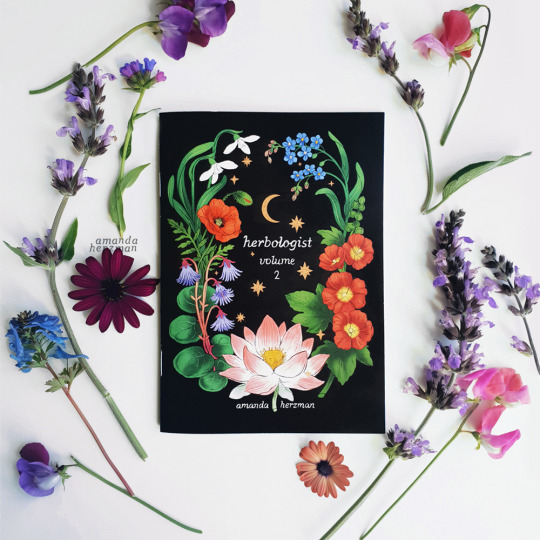


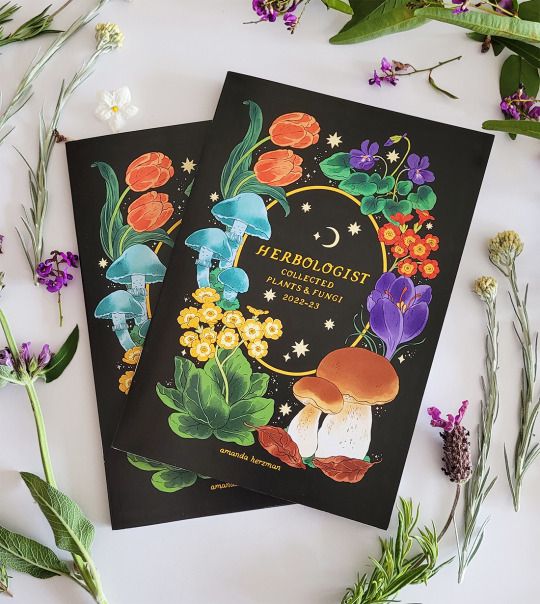

It's been a long long time coming, but all four volumes of the herbologist zine are now in stock! Each zine collects together a year of my patreon plant and fungi rewards. In each book you'll find a year of my exploration, illustration, folklore and scientific facts about the wonderful botanical and fungi filled world around us!
Thanks to the wonderful @mushroomyhouse - who helped me turn this print run into a reality! I could not have done it without them!
Shop link 🌟💖
#boosting is adored!#shop update#shop small#botanical illustration#artists on tumblr#herbology#plantlore#plantblr#small business#plant art#cottageblr#witch aesthetic#folklore
227 notes
·
View notes
Text

A Handbook of Native American Herbs
#american indians#indigenous peoples#herbs#herbalism#botany#ethnobotany#medicinal plants#herbology#nature#natural medicine#shamanism#health and fitness#alternative therapies#books#🌱#📚
87 notes
·
View notes
Text
Day 29: Pollen (Part 2 Preview)

Harry: now with Draco’s ‘undivided’ attention, feasting, and devoting to a much more pleasant bud of sorts.
Click the link to check out the full drawing for today’s prompt! Rated E for ‘everyone over the age of 18’ obviously
#please be nice to me#boshhptober2023#this was so funny to crop#drawtober#boshspice#8th year#hogwarts#herbology#art#drawing#sketch#artists on tumblr#doodle#harry potter#drarry#draco malfoy#boshdraws#hpdm#harry x draco
267 notes
·
View notes


